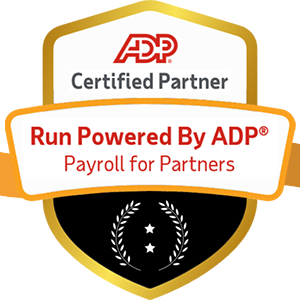Introduction: In today's fast-paced business world, retaining top talent has become a critical challenge for organizations across industries. With the rise of job-hopping and increased competition for skilled workers, companies must find innovative ways to keep their best employees engaged and motivated. One powerful strategy that has gained traction in recent years is encouraging internal mobility – the practice of moving employees across different roles, departments, or locations within the organization. By embracing talent mobility, companies can not only retain their most valuable assets but also foster a culture of growth, learning, and innovation. In this article, we'll explore the best practices for managing talent mobility and share insights from leading experts in the field.
The Business Case for Talent Mobility

Before diving into the best practices, let's first understand why talent mobility matters. According to a study by the Society for Human Resource Management (SHRM), the cost of replacing an employee can range from 50% to 200% of their annual salary, depending on their level and expertise. This includes not only the direct costs of recruitment and training but also the indirect costs of lost productivity, knowledge, and morale. On the flip side, research by Deloitte found that organizations with strong internal mobility programs have 41% higher employee retention rates and 32% higher employee engagement scores than those without.
But the benefits of talent mobility go beyond retention and engagement. By moving employees across different roles and departments, companies can:
- Develop a more versatile and adaptable workforce: When employees gain experience in different areas of the business, they become more well-rounded and better equipped to handle complex challenges.
- Foster innovation and creativity: Exposing employees to new perspectives and ideas can spark fresh thinking and lead to breakthrough innovations.
- Improve succession planning: By developing a deep bench of talent with diverse skills and experiences, companies can ensure a smooth transition when key leaders leave or retire.
- Enhance employee satisfaction and loyalty: When employees feel that their company is invested in their growth and development, they are more likely to stay and give their best effort.
Now that we understand the business case for talent mobility, let's explore some best practices for making it work.
Best Practice #1: Make Talent Mobility a Strategic Priority
The first step in managing talent mobility is to make it a strategic priority for the organization. This means going beyond lip service and putting real resources and commitment behind the effort. Some key actions to take:
- Set clear goals and metrics: Define what success looks like for your talent mobility program and how you will measure progress. This could include metrics such as internal hire rates, employee engagement scores, and retention rates.
- Engage senior leaders: Get buy-in and support from top executives who can champion the cause and role model the behaviors you want to see.
- Communicate the vision: Share the business case for talent mobility with employees at all levels and explain how it aligns with the company's overall strategy and values.
- Allocate resources: Dedicate budget, staff, and technology to support the talent mobility effort. This could include investing in learning and development programs, career planning tools, and internal job boards.
Best Practice #2: Create a Culture of Learning and Development

To enable talent mobility, companies must create a culture that values learning and development. This means not only providing formal training programs but also encouraging employees to seek out new experiences and challenges on their own. Some key actions to take:
- Offer diverse learning opportunities: Provide a range of learning options, from classroom training to online courses to on-the-job experiences.
- Encourage cross-functional collaboration: Create opportunities for employees to work with colleagues from different departments or functions, such as through project teams or job rotations.
- Promote a growth mindset: Emphasize the importance of continuous learning and taking risks, and celebrate both successes and failures as opportunities for growth.
- Provide career coaching: Offer one-on-one coaching or mentoring to help employees identify their strengths, interests, and development areas, and create personalized career plans.
Best Practice #3: Make Internal Opportunities Visible and Accessible
One of the biggest barriers to talent mobility is a lack of awareness about internal job opportunities. To overcome this, companies must make these opportunities visible and accessible to all employees. Some key actions to take:
- Create an internal job board: Develop a centralized platform where employees can view and apply for open positions across the organization.
- Encourage managers to share opportunities: Train managers to proactively identify and share development opportunities with their team members, even if it means losing them to another department.
- Conduct regular talent reviews: Hold regular discussions about employee performance, potential, and career aspirations, and use this information to match employees with relevant opportunities.
- Promote success stories: Highlight examples of employees who have successfully moved into new roles or departments, and share the positive impact this has had on their careers and the business.
Best Practice #4: Develop Fair and Transparent Mobility Processes
To build trust and credibility, companies must ensure that their talent mobility processes are fair, transparent, and consistent. Some key actions to take:
- Establish clear criteria: Define the skills, experiences, and competencies required for each role, and use these criteria to evaluate candidates objectively.
- Provide feedback: Give candidates timely and constructive feedback on their applications and interviews, regardless of the outcome.
- Monitor diversity and inclusion: Track the demographics of employees who are moving into new roles, and take steps to ensure that the process is equitable and inclusive.
- Communicate the process: Clearly explain the steps involved in applying for and securing a new role, and make sure this information is easily accessible to all employees.
Best Practice #5: Support Employees Through Transitions

Finally, companies must provide support to employees as they navigate the challenges of transitioning into new roles or departments. Some key actions to take:
- Offer onboarding and training: Provide comprehensive onboarding and training programs to help employees quickly get up to speed in their new roles.
- Assign mentors or buddies: Pair employees with experienced colleagues who can provide guidance and support during the transition period.
- Encourage networking: Create opportunities for employees to build relationships with their new team members and stakeholders, such as through social events or team-building activities.
- Provide ongoing feedback: Regularly check in with employees to provide feedback on their performance and help them identify areas for continued growth and development.
Conclusion
Talent mobility is a powerful tool for retaining top talent and driving business success in today's competitive landscape. By making it a strategic priority, creating a culture of learning and development, making internal opportunities visible and accessible, developing fair and transparent processes, and supporting employees through transitions, companies can unlock the full potential of their workforce and build a strong foundation for long-term growth and innovation. While managing talent mobility requires a significant investment of time and resources, the payoff – in terms of employee engagement, retention, and business performance – is well worth the effort.
Thought-Provoking Questions
- How can companies balance the need for talent mobility with the desire for stability and continuity within teams and departments?
- What role can technology play in facilitating talent mobility, and what are some of the key considerations for implementing mobility-related tools and platforms?
- How can companies measure the ROI of their talent mobility efforts, and what are some of the key metrics to track over time?
- What are some of the potential unintended consequences of talent mobility, and how can companies mitigate these risks?
- How can companies ensure that their talent mobility programs are inclusive and equitable, and that they are not inadvertently perpetuating biases or disparities?






